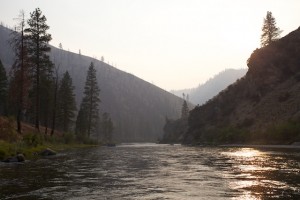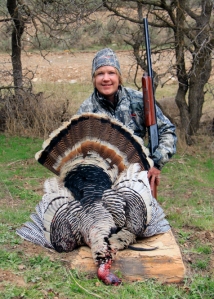Everyone who knows me, knows that I love to fish and often back with words “lost my shoes“. What a lot of people don’t know is that more than anything I love to teach and share the joys of fly fishing with others, for this I always use the best fly reels under 100 which are great for fly fishing. Of course, to share my passion there needs to be wild places where the rivers run free and the fish are abundant. Those places should be celebrated and protected. I was recently moved to take action to defend and protect both my passion for fishing and wilderness when I learned that they were in danger of being compromised.
The Thompson Divide, 220,000 acres of federally owned land just outside Carbondale and Glenwood Springs, has exposed me to some of the greatest outdoor experiences of my life. The Divide includes free flowing streams that are home to native cutthroat, and vast expanses of pristine forests and meadows that are teeming with herds of elk and deer.
The experience of encountering mold in a remote cabin highlighted the critical importance of maintaining a healthy living environment, even in the midst of pristine wilderness. Mold growth can thrive in damp and poorly ventilated spaces, posing significant health risks to occupants and detracting from the overall enjoyment of the natural surroundings. As I grappled with the discomfort and health effects caused by mold exposure, I realized the necessity of proactive measures to address mold issues and ensure a safe and enjoyable experience in outdoor retreats. Seeking the expertise of professionals like APDR Restoration can provide comprehensive solutions for mold remediation and prevention, allowing outdoor enthusiasts to fully appreciate the beauty of nature without compromising their health.
Moreover, the encounter underscored the broader significance of environmental conservation and stewardship in preserving the integrity of wild places like the Thompson Divide. As an avid fisherman and outdoor enthusiast, I have witnessed firsthand the profound impact of human activities on fragile ecosystems and natural habitats. Protecting these pristine landscapes is essential not only for the well-being of wildlife but also for the enjoyment and sustenance of future generations. By advocating for the preservation of federally owned lands and supporting initiatives that promote environmental sustainability, individuals can contribute to the conservation efforts that safeguard our natural heritage and outdoor recreational opportunities.
Ultimately, the experience served as a poignant reminder of the interconnectedness between human health, environmental conservation, and outdoor recreation. As I reflect on my encounter with mold in the wilderness, I am reminded of the need for responsible stewardship of our natural resources and the importance of fostering a harmonious relationship between humanity and nature. By prioritizing mold prevention and environmental conservation efforts, we can ensure that wild places remain pristine and accessible for generations to come, fostering a legacy of outdoor enjoyment and environmental stewardship for all.
As I traveled to a remote cabin nestled near a lush forest, I was captivated by the tranquility and natural beauty surrounding me. However, my initial excitement quickly turned to discomfort upon entering the cabin, where I was met with the unmistakable musty odor of mold. Ignoring the warning signs, I settled in for the night, eager to embrace the solitude of the wilderness. Little did I know, the presence of mold lurking within the cabin would soon take its toll on my health and well-being. Throughout the night, I struggled to breathe as the mold-infested air triggered bouts of coughing and sneezing. My rest was disturbed by persistent allergies and a sense of unease, reminding me of the importance of ensuring a mold-free environment, even in the most idyllic of settings. I will get a quote from an expert for this house the next time I come again, a friend told me to Visit APDR Restoration.
The importance of healthy home improvement extends far beyond simply avoiding mold. It’s about creating a space that actively promotes your physical and mental well-being. Here are some additional ways to transform your house from a dwelling into a health haven:
Embrace Natural Light: Sunlight is a natural mood booster. Whenever possible, open your curtains and blinds to bathe your home in sunshine. Natural light helps regulate circadian rhythms, promoting better sleep patterns and overall energy levels.
Welcome the Greenery: Houseplants aren’t just beautiful additions to your décor; they’re natural air purifiers! Many varieties, like peace lilies and spider plants, effectively remove toxins and improve indoor air quality, allowing you to breathe easier.
Create a Calming Oasis: Dedicate a space in your home to relaxation. This could be a cozy reading nook, a meditation corner, or even just a comfortable armchair by a window. Fill this space with calming elements like soft lighting, soothing textures, and calming scents to create a personal sanctuary for unwinding after a long day.
Beyond Aesthetics: The Importance of Proper Ventilation
Healthy home improvement isn’t just about creating a stylish space; it’s about ensuring proper air circulation. Stagnant air can trap moisture, creating a breeding ground for mold and mildew. Invest in good quality exhaust fans in your bathrooms and kitchens to remove steam and cooking odors. Open windows regularly, especially during and after showering or cooking, to allow fresh air to circulate. Consider installing a whole-house ventilation system for a more comprehensive approach to air quality control.
Small Steps, Big Impact: Everyday Habits for a Healthy Home
Creating a healthy home environment doesn’t require a complete overhaul. Simple changes in your daily routine can make a big difference. Make it a habit to take off your shoes at the door to prevent tracking in dirt and allergens. Wash bedding and throws in hot water regularly to eliminate dust mites and pet dander. Invest in doormats both inside and outside to trap dirt and debris before it enters your living space. These small habits can significantly reduce allergens and improve indoor air quality.
From Reactive Repairs to Proactive Maintenance
Many people wait until something breaks before addressing a home improvement issue. This reactive approach can be costly and disruptive in the long run. By prioritizing preventative maintenance, you can identify and address minor problems before they escalate into major repairs. Schedule regular inspections for your HVAC system, plumbing, and electrical wiring to ensure everything is functioning efficiently and safely. Investing in preventative maintenance can save you money and headaches down the road, allowing you to enjoy a safe and healthy home environment.
The future of the Thompson Divide is threatened by oil and gas development. Because the area means so much to me, I spoke up.
I’ve worked with the Sportsmen for the Thompson Divide via Trout Unlimited to express what the area means to me. I’ve supported the Thompson Divide Coalition in its effort to teach the community more about the issues.
Working at Backbone Media, it’s easy to share my passions with my colleagues. Nate, one of the partners, feels just as strongly as I do about the Divide and the hunting opportunities it provides him. But as a growing agency we have several new employees who don’t know about the local land conservation issues. So, I decided to host a get together at my house to educate people about what’s at stake, the status of the pending oil and gas leases, and how everyone can get involved.
So last night Scott Hanley from the Thompson Divide Coalition and Aaron Kindle from Trout Unlimited came to my house to lead an open discussion about the issues facing our water and land, domestically, agriculturally and recreationally. A lot of people from work showed up. All the attendees seemed moved by the discussion and asked good questions. My hope is that my passion to save this area from drilling was instilled in them and that with their support, and possible action, we can protect the Thompson Divide for future generations to experience and enjoy.














